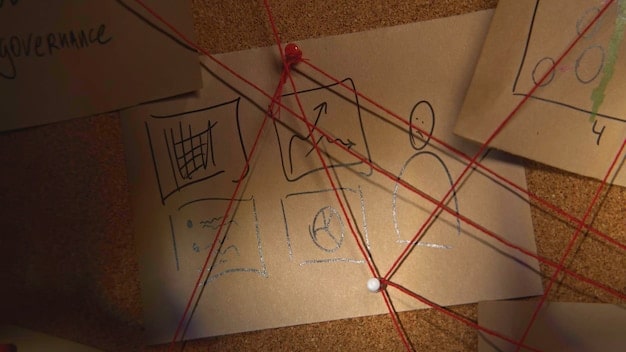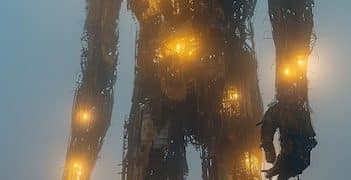Remote Viewing: Unlocking Psychic Abilities for National Security?

Remote viewing research explores the potential of psychic abilities to gather intelligence for national security, a concept that has gained traction despite scientific skepticism.
The concept of remote viewing research gaining traction raises intriguing questions about the potential of psychic abilities in national security. Can the human mind truly transcend space and time to gather intelligence? This article delves into the history, science, and controversies surrounding this fascinating field.
The Origins of Remote Viewing: Project Stargate
The exploration of psychic abilities for national security purposes isn’t a new phenomenon. Project Stargate, a classified unit within the U.S. Army Intelligence and Security Command, represents a significant chapter in this history.
Project Stargate aimed to determine if remote viewing could provide accurate and actionable intelligence. This involved training individuals to perceive distant locations and events using only their minds.
The CIA’s Involvement and Initial Experiments
The CIA played a crucial role in the early stages of remote viewing research. Concerned about Soviet research into psychic phenomena, the agency initiated its own investigations.
These experiments involved individuals attempting to describe or sketch details of remote locations, often with surprising accuracy, though inconsistencies were also present.
Notable Figures in Remote Viewing Research
Several individuals became prominent figures in Project Stargate, contributing to the development and refinement of remote viewing techniques.
- Ingo Swann: A key figure who developed Co-ordinate Remote Viewing (CRV).
- Harold Puthoff: Physicist who conducted early research at Stanford Research Institute (SRI).
- Edwin May: Directed the program after Puthoff and helped structure the program’s operations.

Project Stargate, despite its classification and the skepticism it faced, laid the groundwork for future exploration of remote viewing and its potential applications in national security.
Coordinate Remote Viewing (CRV): A Structured Approach
Coordinate Remote Viewing (CRV) is a specific protocol developed by Ingo Swann designed to standardize and improve the accuracy of remote viewing sessions. It provides a framework for individuals to access and interpret information from distant locations.
CRV involves a series of structured steps and prompts, guiding the remote viewer through different levels of data acquisition and analysis. The goal is to minimize personal bias and maximize the clarity of the information obtained.
The Seven Stages of CRV
CRV is typically broken down into seven stages, each with specific goals and techniques. These stages build on each other, progressively refining the remote viewer’s perception.
The stages go from basic data to detailed analysis and is meant to provide the viewer with feedback to improve accuracy.
Criticisms and Scientific Debates
Despite its structured approach, CRV remains a subject of scientific debate. Critics question the validity of the results and the potential for unintentional cuing or interpretation bias.
- Lack of consistent, replicable results.
- Difficulty in eliminating subjective interpretation.
- Concerns about confirmation bias influencing outcomes.
The development of CRV marked a significant attempt to systematize remote viewing, but its scientific legitimacy continues to be debated.
Declassification and Evaluation of Project Stargate
After decades of secrecy, Project Stargate was declassified in 1995, allowing for independent evaluation of its effectiveness and value.
The declassification of the program brought many facets of its operation to light, though many still debate its value.
The American Institutes for Research (AIR) Report
The declassification led to the American Institutes for Research (AIR) being commissioned to conduct a comprehensive evaluation of Project Stargate. Their findings remain a point of contention today.
The AIR report concluded that remote viewing did not produce actionable intelligence and recommended against its continued funding which ultimately led to closure.
Arguments for and Against the AIR Report
The AIR report has been subject to both support and criticism, with proponents highlighting its thoroughness and detractors questioning its methodology and conclusions.
Those who defend remote viewing often point to anecdotal evidence and specific instances where they believe it provided valuable insights.

The declassification of Project Stargate and the subsequent AIR report sparked ongoing debate about the viability of remote viewing as an intelligence tool.
Ethical Considerations and Potential Misuse
The potential use of psychic abilities for national security raises significant ethical questions. How can we ensure that such abilities are used responsibly and ethically?
The morality of gathering intelligence through psychic means remains a topic of intense discussions and controversies.
Invasion of Privacy and Informed Consent
Remote viewing, by its very nature, could potentially allow for the unauthorized invasion of privacy. This raises concerns about informed consent and the rights of individuals being viewed.
Many people regard the concept of the mind being accessed without their consent as an invasive act and in some cases consider it to be a crime.
The Risk of Misinformation and Manipulation
The information obtained through remote viewing is often subjective and open to interpretation. This creates the risk of misinformation and its potential use for manipulation.
- Difficulty verifying the accuracy of remote viewing data.
- Vulnerability to personal biases and agendas.
- Potential for intentional deception or misdirection.
Navigating the ethical landscape of remote viewing is crucial to ensure that its potential benefits are not overshadowed by its inherent risks.
Modern Applications and Continued Research
Despite the controversies and skepticism, research into remote viewing continues in various forms, with potential applications beyond national security.
New age practitioners and private research groups continue to test elements of remote viewing as technologies advance.
Remote Viewing in Archaeology and Anthropology
Some researchers explore the use of remote viewing to locate archaeological sites or gain insights into ancient cultures. These applications remain largely speculative.
Certain remote viewers claim the ability to describe ancient structures and artifacts, though their veracity is difficult to ascertain scientifically.
Personal Development and Therapeutic Applications
Remote viewing techniques are sometimes incorporated into personal development programs, with proponents suggesting they can enhance intuition and self-awareness.
- Increased mindfulness and self-reflection.
- Exploration of non-ordinary states of consciousness.
- Potential for creative problem-solving.
From scientific research to therapeutic application remote viewing continues to attract people who seek to understand its potential.
The Skeptic’s Perspective: Debunking Remote Viewing
Skeptics often criticize remote viewing research, arguing that its alleged successes can be attributed to chance, suggestion, or outright fraud.
The scientific community is largely, though not universally, skeptical of remote viewing’s potential.
The Role of Cold Reading and Confirmation Bias
Skeptics argue that remote viewers often rely on cold reading techniques, gathering information through subtle cues and leading questions. Confirmation bias then reinforces the perception of success.
This bias causes successes in perceived intelligence gathering to be exaggerated while failures are ignored.
The Lack of Reproducibility and Scientific Evidence
One of the primary criticisms of remote viewing is the lack of consistent, reproducible results in controlled experiments. The absence of a clear mechanism further fuels skepticism.
Science is about proving things that can be tested repeatedly, something remote viewing has failed to do.
Skepticism towards remote viewing serves as a crucial check, promoting critical thinking and demanding rigorous scientific standards in paranormal research.
| Key Point | Brief Description |
|---|---|
| 🕵️ Project Stargate | US Army’s exploration of psychic abilities for intelligence gathering. |
| 🔮 Coordinate RV | A structured protocol to standardize remote viewing sessions, by Ingo Swann. |
| 🤔 AIR Report | Concluded remote viewing did not provide actionable intelligence. |
| ⚖️ Ethical Issues | Invasion of privacy, informed consent, and the risk of misinformation. |
Frequently Asked Questions
▼
The main purpose of Project Stargate was to investigate the potential of remote viewing for military and intelligence applications. The US Army wanted to know in gathering intelligence psychically was effective.
▼
CRV is not widely accepted within the scientific community due to the limited consistent evidence in controlled experimental settings. The methodology is not universally considered valid.
▼
The AIR report concluded that remote viewing did not produce actionable intelligence useful for national security purposes and led to the end of project Stargate’s funding.
▼
The main ethical concerns include potential invasion of privacy, lack of informed consent, and the risk of spreading misinformation or manipulation through remote viewing efforts.
▼
Yes, but not in a formal capacity, as far as public knowledge is concerned. Though the US military ended Project Stargate, there are individuals and groups who continue independent analysis.
Conclusion
The story of remote viewing and its potential for national security is a complex mix of scientific inquiry, espionage intrigue, and ethical dilemmas. While the scientific validity of remote viewing remains hotly debated, the topic continues to fascinate, inviting us to consider the boundaries of human perception and the potential of the unknown.





